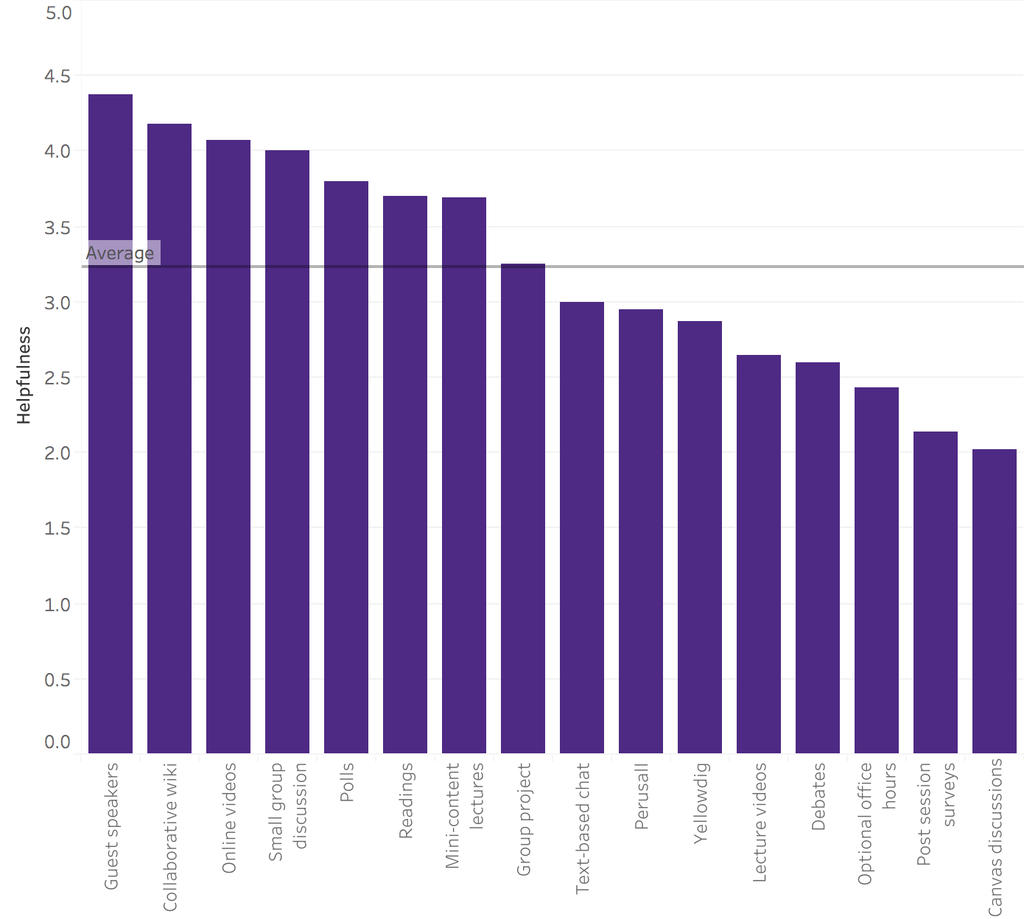Activities and Tools Used
In alignment with previous research on edtech adoption, emphasis should not be placed on the technology tools but rather on how those tools are used, with particular importance in the blended format on integration between asynchronous and synchronous activities.In Brief
Coursework incorporates a variety of activities that promote communication and collaboration, including group work, discussion-based assignments, and peer reviews.
The program emphasizes active learning strategies: synchronous and face-to-face sessions are leveraged to facilitate as much interaction as possible. Any activities that do not require significant interaction (lectures, video content, written assignments, quizzes, etc.) are delivered asynchronously.
An assortment of educational technology tools are employed to facilitate student engagement and discussion, including Flipgrid, Yellowdig, and Adobe Connect breakout rooms.
Detail
In order to facilitate content delivery, student engagement, and assessment, our blended courses incorporated many different teaching and learning strategies and tools. Instructional designers worked with faculty to develop these activities based on the learning objectives, nature of the content, and modality (in-person, online synchronous, asynchronous), with a continued emphasis on promoting social presence within the course, including student-to-student and student-to-instructor engagement. We emphasized active learning strategies and tried to take advantage of synchronous sessions (both online and face-to-face) to facilitate as much interaction as possible, while any activities that did not require significant interaction (such as lectures, written assignments, and quizzes) were delivered asynchronously.
In the online sessions, activities that provided opportunities for peer interaction (small group discussions and chat-based discussions) were the most effective. I appreciated the chat-based discussions because the class was so large and they gave more students a chance to participate.”
In ranking student-reported “helpfulness” of all tools and activities implemented within our blended courses (Figure 4), top-rated activities include a blend of content-delivery methods (guest speakers, online videos, and readings) and peer engagement activities (collaborative assignments and small group discussion). Presumably it is the blend of these activities that contributes to students’ overall understanding, and again, is heavily influenced by how the activity is integrated into the course.

Comparing the tools used to students’ overall satisfaction and interaction in each course, no particularly relevant trends stood out. There was no increase in satisfaction or interaction based on the number of tools used and there was no individual tool that seemed to lead to higher satisfaction scores reported levels of interaction. Instead, it appears that the deliberateness with which tools were integrated to connect synchronous and asynchronous activities had a greater impact on ratings of helpfulness. For example, Yellowdig, a social discussion tool, was used in both Course 2 and Course 3, but students in Course 3 rated the tool as much more helpful (Figure 5). The two significant differences in how Yellowdig was used were that in Course 3, the instructor referenced the Yellowdig board during each synchronous class session, often having students share their favorite takeaways from the Yellowdig discussion, and the directions for how students should participate in the discussion were more clear. Conceivably, this clarity, connection across modalities, and instructor engagement with the discussion led to higher reported usefulness of the tool.
